Eco-Cha Tea Club

Competition Grade Wenshan Baozhong Tea | Eco-Cha Tea Club
Batch #55 of the Eco-Cha Tea Club is an award-winning Wenshan Baozhong Tea that was entered in the recent spring tea competition of the local Farmers' Association. Preparation for competition involves removing the bulkier stems from the leaves, and also sorting the leaves by coloration to achieve the most uniform stock of leaf material possible.
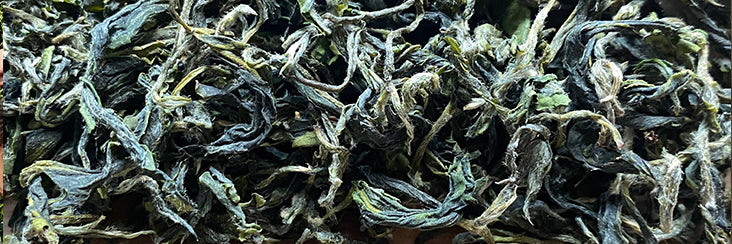
Early Spring Bi Luo Chun Green Tea Tasting Notes | Eco-Cha Tea Club
We can see in the photo of the dried leaves above that they were hand-plucked while still very young and tender. This is evident not only by the size of the leaves, but also in the protective fur that is still on the whitish colored leaf buds. It is this stage of leaf growth, along with the heirloom cultivar of tea tree that give Bi Luo Chun its distinctive character among Green Teas — especially when it is from the first flush of spring tea buds!
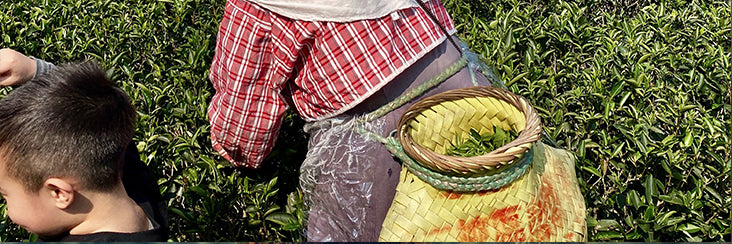
Early Spring Bi Luo Chun Green Tea | Eco-Cha Tea Club
The earliest days of spring harvest are known to produce the most complex and delicately flavored Bi Luo Chun Green Tea. The leaves have more substance as a result of growing more slowly, combined with a fresh spring floral quality that comes from the plants entering their heightened phase of spring vegetation.
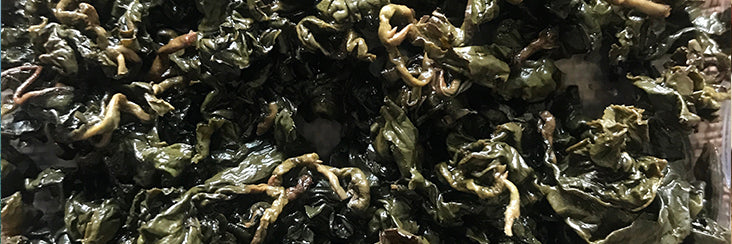
Competition Grade Dong Ding Oolong Tea Tasting Notes | Eco-Cha Tea Club
These leaves were harvested by hand from the residential farm that is our ongoing source of Dong Ding Oolong Tea. They were also de-stemmed by hand and roasted extensively to meet the competition standard. The brewed tea has a bold roasted character that is balanced out by a rich, smooth textured and complex flavor profile. It is reminiscent of fire-roasted yams and butternut squash.
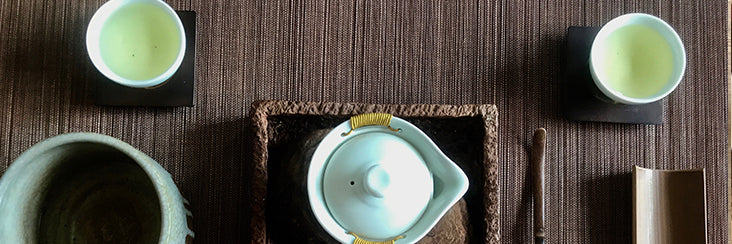
Alishan Late Spring Oolong Tea Tasting Notes | Eco-Cha Tea Club
The complex aroma of the brewed tea leaves has subtle hints of a bug bitten character, but not very obvious. The sufficient oxidation offers a fresh scone scent, with a touch of honey, making us think that there is some influence from the Green Leafhopper. It is very likely that this note is subtle due to the fact that it had rained very near harvest time, which is said to dilute or dissipate the chemical compounds that are responsible for this character of flavor. The texture is smooth and balanced, with delicate complexity.

Alishan Late Spring Oolong Tea | Eco-Cha Tea Club
We discovered this batch of tea through our mentor, Lisa Lin, who had already purchased a significant amount of this day's harvest. We introduced Lisa to Mr. Ye a few years ago, and she has been sourcing batches of bug bitten spring tea from him every year since. About a month ago, we were sitting at Lisa's tea table, and just happened to ask if she had bought any spring tea from Mr Ye. She said yes, and promptly brewed some for us to try. We were impressed, and called Mr. Ye the next day to see if any of this day's harvest was still available. He said yes.
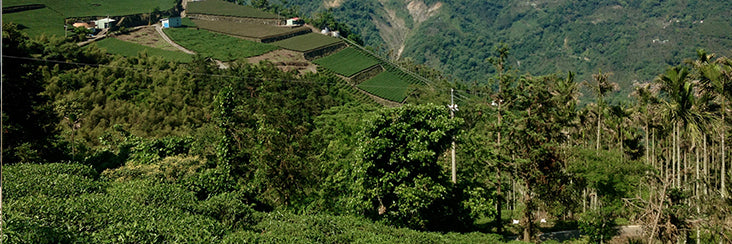
Light Roast Concubine Oolong Tea | Eco-Cha Tea Club
Andy visited the farm a second time because the older brother had told him that he had transitioned his own plots of tea to completely natural farming, i.e. not using any chemical pesticides or fertilizers. The image above clearly shows the contrast of a transitional plot of tea in the foreground, compared to the commercially farmed plots of tea on the neighboring farm below in the background.
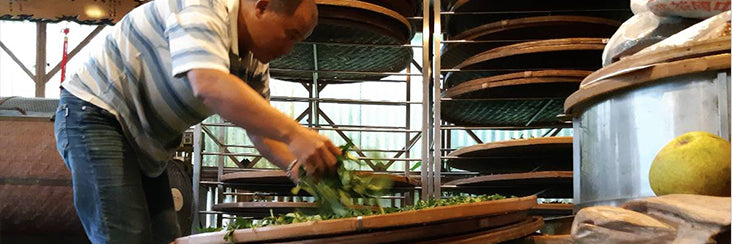
Fo Shou Oolong Tea | Eco-Cha Tea Club
This month, we are celebrating the third anniversary of the Eco-Cha Tea Club by sharing a batch of Fo Shou Oolong Tea for the very first time. The Chinese Fo Shou (佛手) means Buddha Hand. The name refers to the tea plant, or cultivar, which classifies as a large leaf type. This puts it in the category of Assam, and wild strains of tea, along with the Taiwanese hybrid cultivar — Red Jade #18. Despite the fact that virtually all large leaf type strains of tea are cultivated for Black Tea production in Taiwan, Fo Shou has found its unique niche in the making of (partially oxidized) Oolong Tea. Similar to its predecessor in mainland China, this batch of Fo Shou was made in the fashion of traditionally made Tie Guan Yin from Mu Zha, Taiwan.

Honey Oolong Tea | Eco-Cha Tea Club
A mom, dad, and son team manage their small family farm and process their crops on their own. And the recent spring harvest offered the pleasant surprise of one day's harvest turning out to be Honey Oolong. This name is properly used when the flavor of the tea has a distinct honey character that results from the Green Leafhopper working its magic. The Leafhopper (jacobiasca formosana) is a tiny green bug that likes to feed on the sap of the tender new leaf buds.
- 1
- 2

